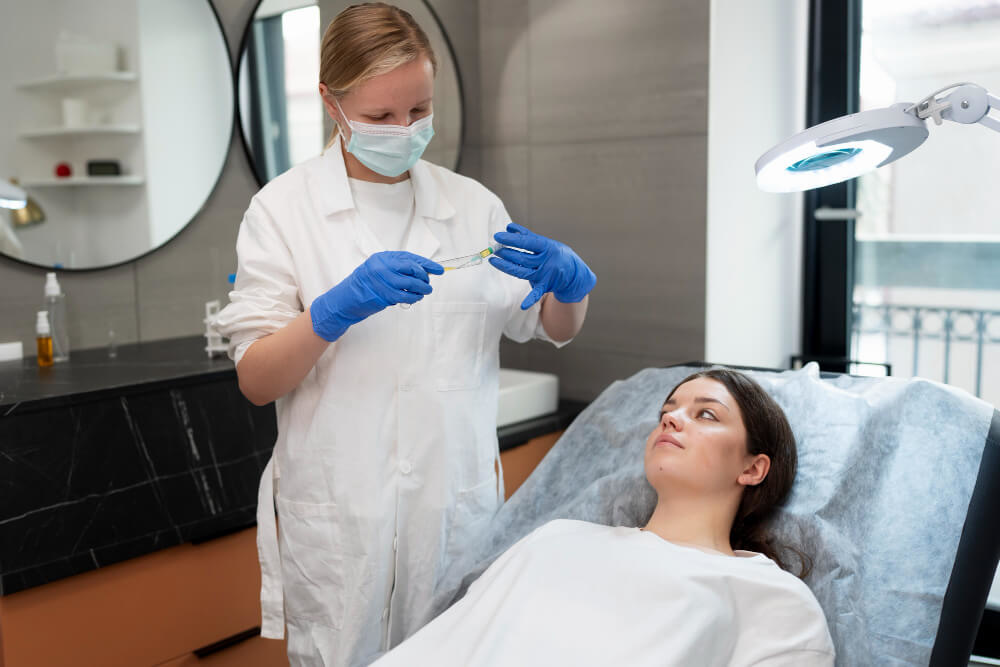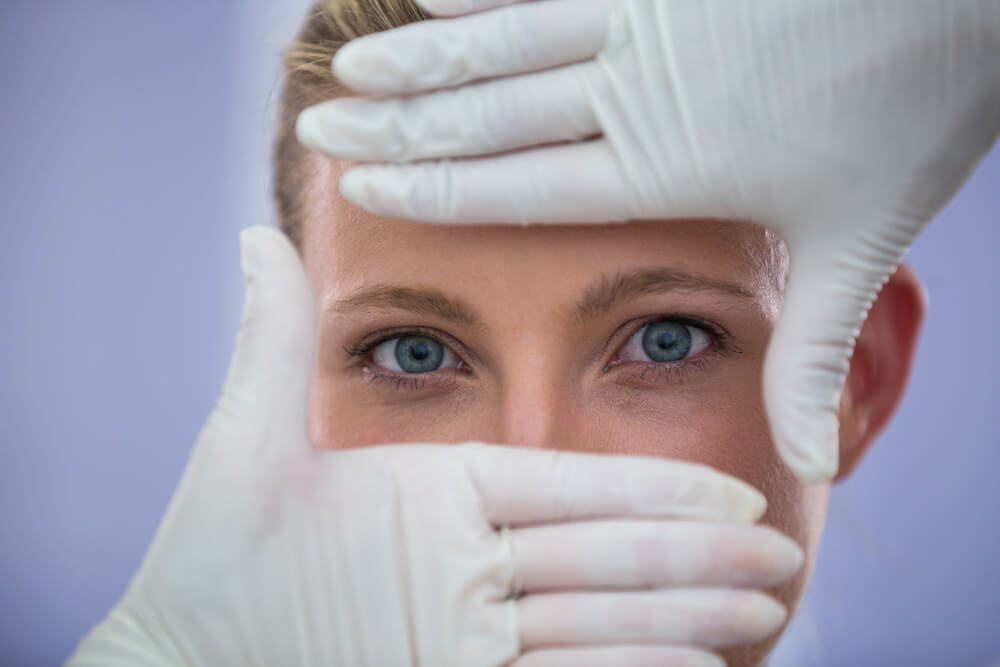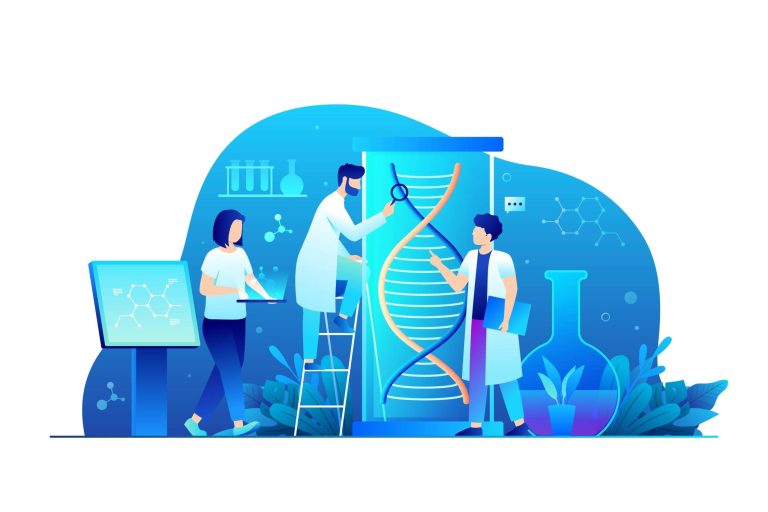What Is a Longevity Clinic and How Can It Change Your Future?
Everyone shares a fundamental desire to live a long and fulfilling life. We often think about the number of years we have, but what about the quality of those years? This is where the crucial distinction between lifespan and healthspan comes into play. Lifespan is simply how long you live, while healthspan is how long you live in good health, free from chronic disease and full of vitality.
Imagine spending your later years traveling, playing with grandchildren, and pursuing hobbies with the same energy you had decades earlier. This is the goal of a new and rapidly growing field of medicine. At the heart of this movement is a specialized type of medical practice known as a longevity clinic. It represents a paradigm shift from treating sickness to proactively building and maintaining optimal health over a lifetime.
A longevity clinic is not a place you visit only when you feel unwell. Instead, it is a partnership with a medical team dedicated to understanding your unique biology. They use advanced diagnostics and personalized strategies to slow the aging process, prevent age-related diseases, and maximize your physical and cognitive performance for as long as possible.

How Does Longevity Medicine Differ from Conventional Medicine?
Traditional healthcare has long operated on a reactive model. You feel a symptom, you see a doctor, and you receive a diagnosis and treatment for a specific ailment. While this system is invaluable for acute illnesses and injuries, it often waits for disease to manifest before taking action. It’s a system designed to manage sickness rather than cultivate wellness.
Longevity medicine flips this script entirely. It is proactive, predictive, and personalized. Instead of waiting for the check engine light to come on, it aims to keep the engine finely tuned from the very beginning. The focus is on identifying and addressing the root causes of aging and disease at a cellular level, long before they become noticeable problems.
Think of it this way: conventional medicine might prescribe medication to lower high blood pressure once it’s detected. Longevity medicine, on the other hand, investigates why your blood pressure is rising in the first place. It looks at factors like inflammation, hormonal imbalances, nutritional deficiencies, and genetic predispositions to create a strategy that corrects the underlying issue, not just the symptom.
The goal is not merely to add years to your life, but to add life to your years. It’s a comprehensive approach that considers every aspect of your health, from your DNA to your daily habits, to create a blueprint for sustained vitality.

What Can You Expect During Your First Visit?
Walking into a longevity clinic is a distinctly different experience from a typical doctor’s appointment. Forget the brief, rushed consultation. Your initial engagement is an extensive, deep dive into your entire health history, lifestyle, and personal goals. It is the beginning of a long-term, collaborative relationship with your health team.
The process begins with a comprehensive assessment that goes far beyond standard check-ups. This is about gathering a massive amount of data to create a complete, high-resolution picture of your current state of health. This baseline information is the foundation upon which your entire personalized program will be built.

What Kind of Data Do They Collect?
The diagnostic process in a longevity clinic is exhaustive and multi-faceted. The team needs to understand your body from the inside out, using cutting-edge tools to measure what was once unmeasurable. This data collection is about finding subtle imbalances and risks that a standard physical would miss.
This typically includes advanced blood panels that look at hundreds of biomarkers, not just a few dozen. These tests assess everything from inflammatory markers and hormone levels to micronutrient status and metabolic health. The goal is to get a granular view of your body’s intricate systems and how they are functioning together.
Furthermore, a key part of the process involves a deep genetic analysis. By understanding your genetic predispositions, clinicians can identify potential health risks you may be more susceptible to and tailor preventative strategies accordingly. This powerful combination of diagnostics is central to creating a truly personalized plan, with many clinics focusing on integrating genetics and advanced biomarker testing to guide their interventions.
Other common assessments include body composition analysis to measure muscle mass and visceral fat, cognitive function tests to establish a baseline for brain health, and even assessments of your microbiome. Every piece of data is a clue that helps assemble the puzzle of your unique biology.

How Is a Personalized Plan Created?
Once this wealth of data has been collected, it is carefully analyzed and synthesized. This is where the expertise of the longevity physician and their team truly shines. They translate complex biological data into a clear, actionable, and personalized roadmap designed to help you achieve your health goals.
This plan is not a generic handout with advice to ‘eat better and exercise more’. It is a highly specific protocol tailored to your body. It will outline precise nutritional guidelines, a structured exercise regimen, a sleep optimization strategy, and techniques for managing stress. It is a 360-degree approach to your well-being.
Your personalized program will also likely include a targeted supplementation plan. Based on your biomarker and genetic data, the clinic will recommend specific vitamins, minerals, and other compounds to address any deficiencies and support cellular health. This data-driven approach ensures you are taking only what your body truly needs, avoiding guesswork and unnecessary expense.

What Are the Key Strategies Used to Extend Healthspan?
The strategies employed by longevity clinics are grounded in scientific principles that govern the aging process. They focus on influencing key biological pathways to promote cellular repair, reduce inflammation, and enhance metabolic function. These interventions are often categorized into foundational lifestyle pillars and more advanced medical therapies.
These pillars are the non-negotiable bedrock of any effective longevity program. While advanced therapies can be powerful, they cannot compensate for a poor lifestyle foundation. True, lasting health is built upon consistent, positive daily habits.

How Does Nutrition Play a Role?
Nutrition in a longevity context is far more sophisticated than simply counting calories. It’s about using food as a form of biological information to optimize your body’s functions. The plan you receive will be based on your specific metabolism, genetics, and health goals.
Concepts like time-restricted eating or intermittent fasting might be recommended to promote a process called autophagy, where your cells clean out damaged components. Your plan may also focus on a particular dietary pattern, such as a Mediterranean or ketogenic-style diet, depending on what your data suggests is optimal for you.
The emphasis is on nutrient density, anti-inflammatory foods, and maintaining stable blood sugar levels. It is a precise and powerful tool for controlling how your body ages.

What Type of Exercise is Recommended?
Exercise is perhaps the most potent longevity ‘drug’ available, and clinics have a very specific approach to it. The goal is to build and maintain muscle mass, cardiorespiratory fitness, and stability as you age. These are critical indicators of a long healthspan.
A well-designed longevity exercise program typically includes four key components. The first is strength training, which is crucial for maintaining muscle and bone density. The second is aerobic fitness, focusing on building a robust cardiovascular system. The third is stability, which includes balance and flexibility work to prevent injury. Finally, the fourth component involves high-intensity anaerobic exercise to boost metabolic health.
This comprehensive framework ensures you are not just ‘fit’ in one area but are building a resilient and functional body capable of thriving for decades. Many top thinkers in the field, like the physician and researcher Peter Attia, have popularized this structured approach to exercise for longevity.

Why is Sleep So Important?
Sleep is not a passive state of rest; it is a critical period of active repair and rejuvenation for your brain and body. During deep sleep, your body clears out metabolic waste from the brain, consolidates memories, regulates hormones, and repairs cellular damage. Chronic sleep deprivation accelerates the aging process and is linked to numerous diseases.
Longevity clinics place a huge emphasis on sleep optimization. They may use wearable technology to track your sleep stages, duration, and quality. Based on this data, they will provide targeted advice to improve your sleep hygiene. This can include setting a consistent sleep schedule, optimizing your bedroom environment for darkness and temperature, and managing light exposure throughout the day.

How Do They Address Stress and Mental Health?
Chronic psychological stress is a powerful driver of aging. It elevates cortisol levels, which can lead to inflammation, weight gain, and a suppressed immune system. A sound mind is an essential component of a healthy body, and mental and emotional well-being are central to the longevity mission.
Clinics incorporate various strategies to help patients build resilience to stress. These often include mindfulness practices, meditation, breathwork exercises, and sometimes biofeedback technologies. The goal is to train your nervous system to better handle life’s pressures, thereby mitigating the negative biological cascade that stress can trigger.

What Advanced Treatments Might Be Offered?
Beyond the foundational pillars of lifestyle, many longevity clinics offer a suite of advanced medical therapies. These are cutting-edge interventions designed to target specific aging pathways and are always administered based on the patient’s detailed diagnostic data. This is where the field is evolving most rapidly, pushing the boundaries of what is possible in preventative health.
The world of lonegvity medicine is an exciting frontier, blending established medical practices with innovative new technologies. These therapies are not meant to replace lifestyle changes but to augment them, providing an extra layer of support for cellular health and regeneration.
One common area of focus is hormone optimization. As we age, levels of key hormones like testosterone, estrogen, and growth hormone decline. After careful testing, a clinic may recommend bioidentical hormone replacement therapy (BHRT) to restore these levels to a more youthful state, which can improve energy, body composition, and overall vitality.
Other interventions might include peptide therapy, which uses specific chains of amino acids to signal certain cellular functions, or the use of senolytics, compounds that help the body clear out old, dysfunctional ‘zombie’ cells. Some clinics also delve into regenerative aesthetics, combining exosome therapy with micro needling to rejuvenate skin at a cellular level. These advanced options showcase the proactive and comprehensive nature of the field, with pioneering companies like Human Longevity Inc leading the charge in data-driven health intelligence.

How Do You Know If It’s Actually Working?
One of the most compelling aspects of the longevity medicine model is its commitment to data. Your journey does not end after you receive your initial plan. It is a continuous loop of intervention, measurement, and refinement. The entire process is objective and quantifiable.
Success is not measured by how you ‘feel’ alone, although improved well-being is a primary goal. It is measured by tracking your biomarkers over time. Regular follow-up testing allows you and your clinical team to see tangible proof of progress. You can watch your inflammatory markers decrease, your hormone levels optimize, and your metabolic health improve.
This data-driven feedback loop is incredibly motivating. It provides clear evidence that your efforts are paying off at a biological level. It transforms health from a vague concept into a measurable project with clear targets and outcomes. For clinics, it’s about proving their value, which is why they focus on how to measure and demonstrate patient ROI through concrete data.
This dedication to data can be taken to remarkable extremes. Tech entrepreneurs have become famous for meticulously tracking hundreds of their own biomarkers daily in a relentless pursuit of optimization. While the intense regimen of figures like Bryan Johnson’s Quest for immortality is not the norm for most people, it illustrates the profound power of using data to guide health decisions.
Ultimately, a longevity clinic is more than just a medical practice; it’s an investment in your most valuable asset: your future self. It is a commitment to living not just a longer life, but a healthier, more vibrant, and more capable one. By embracing a proactive, scientific, and personalized approach, you can take control of your biology and actively shape the quality of your future years.
Frequently Asked Questions

How can a busy clinic integrate longevity medicine training without disrupting patient care?
Integrating longevity training into a packed clinical schedule requires a strategic, phased-in approach rather than a complete operational halt. Many successful clinics utilize a blended learning model that combines flexible, self-paced online modules with brief, focused team meetings or lunch-and-learns. This method allows staff to absorb foundational principles, such as the hallmarks of aging or the role of key biomarkers, on their own time, minimizing disruptions to daily patient flow.
Furthermore, it is effective to start small by implementing a pilot program or focusing on a single aspect of longevity medicine first, like nutritional science or stress management protocols. Appointing a “longevity champion” within the team can also streamline the process, creating a go-to resource for colleagues and ensuring the training momentum is maintained. This gradual integration demonstrates value quickly and builds team confidence without overwhelming the practice.

What is the best way for newly trained staff to introduce longevity concepts to patients who are unfamiliar with them?
Effective communication starts by framing longevity principles in the context of a patient’s existing health goals and personal values, not as a complex scientific endeavor. Staff should connect concepts like optimizing metabolic health or improving cellular function directly to what the patient wants, whether that is having more energy for their grandchildren or reducing their risk of a hereditary condition. Using simple, relatable analogies and avoiding technical jargon is critical for making these topics accessible and less intimidating.
It is also crucial to empower patients with small, actionable steps rather than overwhelming them with data and abstract theories. A clinician might start by recommending one manageable lifestyle change, such as a specific dietary swap or a new sleep hygiene practice, and provide simple educational materials to support it. This approach builds a foundation of trust and success, making patients more receptive to deeper, more comprehensive longevity strategies in subsequent visits.

Beyond improved patient outcomes, what are the tangible business benefits of investing in longevity medicine training?
Investing in longevity training offers a powerful competitive advantage, clearly differentiating a practice in a saturated healthcare marketplace. It positions the clinic as a forward-thinking leader, attracting a new and motivated patient demographic actively seeking proactive, preventative health solutions. This specialization allows for the introduction of premium, cash-based services, such as advanced diagnostic panels, genetic testing, and personalized wellness coaching, which creates significant new revenue streams.
Moreover, offering advanced training enhances professional development and job satisfaction, which is a key driver for improving staff retention and reducing costly turnover. A proactive care model built on longevity principles also fosters stronger, long-term patient relationships, increasing patient lifetime value and creating more predictable revenue through ongoing monitoring and follow-up care. This ultimately transforms the practice’s financial health by shifting from a reactive model to a more stable, value-driven one.
Are you a healthcare professional ready to lead the future of medicine? Discover the most comprehensive functional medicine training, longevity training, and biohacking certification programs designed specifically for healthcare professionals, medics, and clinic owners who want to master regenerative medicine protocols and anti-aging therapies.







